Full XRF test results for a 2023-purchased Stanley 40 oz Flowstate Quencher H2.0 Tumbler
For those new to the Lead Safe Mama website:
Tamara Rubin is a multiple-federal-award-winning independent advocate for childhood Lead poisoning prevention and consumer goods safety, and a documentary filmmaker. She is also a mother of Lead-poisoned children (two of her four sons were acutely Lead-poisoned in 2005).
- Tamara owns and runs Lead Safe Mama, LLC — a unique community collaborative woman-owned small business for childhood Lead poisoning prevention and consumer goods safety.
- Since 2009, Tamara has been conducting XRF testing (a scientific testing method) using the exact instrumentation employed by the U.S. Consumer Product Safety Commission to test consumer goods for toxicants (specifically heavy metals — including Lead, Cadmium, Mercury, Antimony, and Arsenic).
- Since July of 2022, the work of Lead Safe Mama, LLC has been responsible for 5 product recalls (FDA and CPSC).
- All test results reported on this website are science-based, accurate, and replicable.
- Items that Lead Safe Mama, LLC reports on are tested multiple times to confirm the results published (for each component tested).
- Recent Notable Press: Tamara’s work was featured in Consumer Reports Magazine in February 2023 (March 2023 print edition)and The Guardian in November 2023.
With “Stanley Cups” in the news – here are some of our articles related to that popular topic:
- Stanley’s public response to our findings of Lead in their insulated stainless steel products
- An article specifically about Lead-contaminated sealing dots on insulated Stainless Steel products
- An article with testing for Yeti products
- Articles with testing for Corkcicle products
- Two articles related to Crocodile Creek products
- A video showing how to use reactive agent home test kits – using a Lead-contaminated insulated stainless steel Zak Designs brand product as a testing example
- Our overview article listing many of the water bottles we have tested (and whether or not they have been positive for Lead)
- Lead Safe Mama, LLC’s preferred water bottle brands (brands which are consistently Lead-free)
This is an ad-free article.
Advertising and affiliate income help us cover the costs of the work we do here (independent consumer goods testing and childhood Lead-poisoning prevention advocacy work). We have removed ads from this page and from most of our more widely-read articles to make them easier for you to read. In addition to supporting this work by starting any shopping you might be doing with clicks on our affiliate links, if you would like to support our independent consumer goods testing and childhood Lead-poisoning prevention advocacy work by making a contribution (which will also help us keep our more widely-read articles ad-free), click here. Thank you!
Video #1 showing home test kit testing of an Insulated Stainless Steel Stanley product – Published: March 25, 2023
View this post on Instagram
Video #2 showing XRF testing of an Insulated Stainless Steel Stanley product – Published: March 24, 2023
View this post on Instagram
March 2023 UPDATE: We confirmed that these are sealed with Lead. Please watch the two videos which are embedded above and which can also be found on our Instagram channel. The button with a link to Instagram is at the top of the page.
Table of contents for this article
- Section #1.) First Impressions
- Section #1.A) TLDR
- Section #2.) A note about the presence of trace Cadmium, Antimony & Mercury found
- Section #3.) Leach Testing and the Concern for Nickel (in Stainless)
- Section #4.) The concern for Lead in “inaccessible” components of this product
- Section #5.) Full XRF Readings for ALL accessible components of this product
- 11 components tested
- Section #6.) In Conclusion
- Section #7.) Test results for other brands of insulated Stainless Steel products tested by Lead Safe Mama, LLC
- Section #8.) Testing methodology used by Lead Safe Mama, LLC
Published: March 11, 2023
Updated: January 4, 2024
Section #1) First Impressions
In opening the box for this package my first impression was that I was quite surprised that the colored exterior was not actually paint, but silicone. It appears the cup is actually dipped in silicone. As with other silicone products, some of the preliminary testing showed traces of Cadmium in the silicone coatings, but the readings were not consistently replicable so are not part of the reading set shared below. One reading (not replicated with multiple additional tests) also showed traces (very low levels) of Antimony in the silicone coating and another indicated the possibility of very low levels of Mercury in the coating. However, again, these were not consistently replicable and would need further destructive laboratory testing of the coating to determine the legitimacy of these non-replicable readings.
Section #1.A.) TLDR
Ten Important Points
- The insulated Stainless Steel products manufactured by Stanley test positive for unsafe / hazardous levels of Lead in the exterior bottom “sealing dot” of the products.
- See videos above that show the sealing dot.
- The high-Lead sealing dot is exposed when the product is damaged – specifically when the bottom “button” or cap comes off, making the bioavailable Lead accessible to the user. Lead Safe Mama readers have reported that these bottom caps / buttons come off even when the product is used normally (as intended) – not abused in any way.
- The Leaded component does not come into contact with the contents of the vessel but the user may be exposed to Lead with normal hand-to-mouth activity if the bottom cap / button has fallen off.
- It is not illegal for this product to have a component made of nearly solid Lead, because the product is not an item intended for use by children. Items made for use by adults are allowed to have unsafe levels of Lead in both accessible and inaccessible components.
- If your bottom cap has fallen off you should ask for a replacement or refund.
- The comparable product made by HydroFlask is Lead-free (affiliate link) – it has a similar construction (with a sealing dot) but the sealing dot is made of a Lead-free glass material.
- This is a common issue with many brands of insulated stainless steel food-use products. You can find links with info on other brands we have tested in section #7, below.
- If the bottom cap has come off of your insulated stainless steel water bottle (any brand) and you want to test it to find out if it is positive for Lead – these two test kits will work for testing this particular component – link one and link two. Other brands of home Lead test kits may give false positives and should not be purchased. Please watch the videos above to see which component to test with either of these kits. These kits do not otherwise generally work on consumer goods. [More on that here – video.]
- Recommended For Use With Water Only: Outside of the Lead-considerations, the fact that the interior of these products (the food-contact surface) is a #304 Stainless Steel alloy makes it so they are not a suitable choice for hot or acidic beverages that may be stored long-term (coffee, tea, juice, etc., stored for more than an hour) as there is a potential for Nickel leaching in these circumstances and Nickel is a known carcinogen. Read more about that here.This consideration is supported by the intentional and specific marketing language with these products (see below), they are specifically sold for use with WATER.
Section #2) A note about the presence of trace Cadmium, Antimony, and Mercury found in this product
Given this is clearly a product manufactured for use by adults (and not intended for use by children), it is entirely legal for traces of contaminants (specifically heavy metals) to be in the substrate or coating materials. Any XRF readings of trace (or even significant amounts) of metals that might be considered toxic under most circumstances would not be illegal to find in a product like this as there are no “total content limits” set for toxicants in products intended for adult usage.
Section #3) Leach Testing & the Concern for Nickel in Stainless Steel Vessels
The main set of considerations regulating food-use product manufactured for adult use is that they must meet leach-testing standards set by the FDA. What this means is that when the product is used as intended (as demonstrated by the packaging and marketing for the product) it will not leach any toxicants (carcinogens/heavy metals, including Nickel) into the contents above the allowable thresholds set by the FDA.
Products are only required to be safe from a Leach-testing perspective at the time of manufacture/sale and when used as intended. When no longer new (and/or if not used as intended) there is the possibility of a heavily used/regularly used product to leach toxicants (metals) at levels beyond what is considered safe by FDA standards.
I mention the above because it is specifically interesting as it relates to the clearly articulated corporate messaging regarding this product. As shown in both the website description (first image below) and the images of the labels that come with the product (more images at the bottom of the page) this product has the following language demonstrating that the intended use is primarily for water and not other beverages:
- The name of the product is the Quencher H2.O Tumbler — with H2O being the chemical symbol for water.
- The language on the packaging says “All Day Hydration” — “hydration” being a word we typically associate with water.
- “Using Straw With Hot Drinks May Scald” is printed on the bottom of the cup, supporting the concept that a primary intention for this reusable straw cup is first-and-foremost intended to be used when drinking (cold) water (or other cold beverages), given the straw is an integral component of the product.
- “… so you can easily carry your ice-cold water to work” is in the website listing, with no other beverages mentioned in the products marketing or advertising.
Continue reading below the image:
While I am certain that users of this product may in fact use it for hot beverages, I have previously written about concerns for using any stainless steel cup or water bottle with hot and/or acidic beverages on a regular basis and I believe (educated guess) the language included with this Stanley cup in the packaging, on the website, and on the cup itself is quite intentional. I say this given the potential for harm when using a stainless cup with hot acidic beverages (like coffee or tea)— especially when using that same cup on a regular basis (daily, with long-term use) for that purpose.
If you set aside the fact that the product tested positive for high levels of Lead (and potentially traces of Antimony, Mercury and Cadmium), I think this Stanley 40 oz cup is a great option (comparable to most others available) for drinking cold water (in order to keep hydrated). Said another way, using the product as intended (when the product is not damaged/ when the seal on the bottom is still in place) will not result in Lead poisoning and will also not likely result in Nickel toxicity. However I would not personally recommend using it to drink coffee (or for storing coffee for more than an hour) on a regular basis. I also have concerns for regular usage with cold acidic beverages including juices and lemon-water – especially with long-term storage (keeping the beverage in the vessel for more than an hour). You can read more about the science behind these concerns here on this link.
The main concern in using this cup with hot or acidic (or hot and acidic) beverages is that the stainless steel of the interior of the cup is “304 Stainless Steel,” otherwise known as 18/8 Stainless. What this means (as demonstrated by the XRF reading set for component #4 below), is that the Stainless beverage-contact surface of this cup is about 18% (180,000 ppm) Chromium and about 8% (80,000 ppm) Nickel. Again, Nickel is a known carcinogen and, accordingly, covered by Prop 65 in the State of California. This cup — especially if used daily for off-label uses, including with hot acidic beverages like coffee or tea — could (over time) potentially cause unsafe levels of Nickel exposure to the user. This is true for pretty much ANY stainless steel water bottle or cup similar to this product (from any brand.)
This is not to say that off-label use of this product will cause health impacts for every user — but it is important for users of this product to know the scientific basis for the concern that supports the concept of avoiding daily/habitual use of stainless steel vessels/containers (especially high-nickel content stainless like this example) with hot acidic beverages like coffee or tea. This is especially true if the user is already aware of a Nickel allergy — or if, say, they have had a blood, hair, or urine test indicating they had too much Nickel in their system. You can read more about biological testing for metals on this link.
Section #4) The concern for Lead in inaccessible components of this product
Initial findings: There was no Lead found in any accessible* components of this product (*components accessible to the user when the product was newly purchased, unused and undamaged).
- This article was originally published on March 12, 2023.
- In the original draft of this article we stated that we suspected there was likely Lead in the sealing dot of the product (under the bottom cap / disk), but that we had not done destructive testing to confirm this.
- Less than two weeks later a Lead Safe Mama reader sent in one of these insulated Stainless Steel Stanley brand products for which the bottom cap had fallen off so that we could do additional testing.
- On March 24th and 25th we published two videos (above), confirming that there is – in fact – Lead under the bottom metal disc (with the logo — in the center of the bottom of the cup) used as the sealing material to create the insulated seal for this cup.
- This is not illegal, as this is not an item intended for use by children.
Note: Based on the informal social media poll I took (3/11/23) of Lead Safe Mama readers, I would estimate that between 5 and 10% of people using this cup reported that they experienced a failure of the seal on the bottom, with the disc falling off (exposing a Leaded sealing dot underneath). You can read more about that here.
For the readings below, the metals noted in RED are concerning metals (but not necessarily at concerning levels in this particular product). Metals noted in BLUE are not concerning metals in this application. Metals noted as “non-detect” were not found (within the limits of detection via XRF technology; in this case, the instrument used is calibrated and set up to test for most metals down to ranges of single digits of “parts per million” [ppm]). All tests were done multiple times to confirm the results. Results are science-based, replicable, and accurate (within the limits of XRF technology designed to test consumer goods for toxicants).
*Amazon links are affiliate links. If you purchase something after clicking on one of these links we may receive a small percentage of what you spend — at no extra cost to you.
Section #5)
Full XRF Readings for all Accessible Components of this Product, Components 1 through 11
Component #1)
Exterior Blue Silicone Coating (at lower part/base of the cup) — 60-Second Test
- Lead (Pb): non-detect
- Cadmium (Cd): non-detect
- Tin (Sn): 93 +/- 21 ppm
- Mercury (Hg): non-detect
- Selenium (Se): non-detect
- Barium (Ba): non-detect
- Chromium (Cr): 55,900 +/- 1,400 ppm
- Antimony (Sb): non-detect
- Nickel (Ni): 23,400 +/- 1,200 ppm
- Copper (Cu): 2,435 +/- 205 ppm
- Manganese (Mn): 9,748 +/- 666 ppm
- Titanium (Ti): 9,321 +/- 921 ppm
- Niobium (Nb): 664 +/- 49 ppm
- Molybdenum (Mo): 1,798 +/- 107 ppm
- Iron (Fe): 242,600 +/- 7,500 ppm
- Platinum (Pt): 226 +/- 102 ppm
- Gold (Au): 257 +/- 78 ppm
- Cobalt (Co): 7,000 +/- 618 ppm
- No other metals were detected in consumer goods mode
Component #2)
White Logo Marking on Blue Silicone Coating — 60-Second Test
- Lead (Pb): non-detect
- Cadmium (Cd): non-detect
- Tin (Sn): 110 +/- 23 ppm
- Mercury (Hg): non-detect
- Selenium (Se): non-detect
- Barium (Ba): non-detect
- Chromium (Cr): 64,000 +/- 1,700 ppm
- Antimony (Sb): non-detect
- Nickel (Ni): 26,200 +/- 1,400 ppm
- Copper (Cu): 2,436 +/- 213 ppm
- Zinc (Zn): 77 +/- 40 ppm
- Manganese (Mn): 11,200 +/- 800 ppm
- Titanium (Ti): 83,000 +/- 2,000 ppm
- Niobium (Nb): 820 +/- 57 ppm
- Molybdenum (Mo): 2,080 +/- 126 ppm
- Indium (In): 26 +/- 17 ppm
- Iron (Fe): 276,300 +/- 9,500 ppm
- Platinum (Pt): 344 +/- 116 ppm
- Gold (Au): 252 +/- 83 ppm
- Cobalt (Co): 8,994 +/- 714 ppm
- No other metals were detected in consumer goods mode
Component #3)
Center of Bottom on Cup’s Exterior (silicone coated area with bottom logo)— 60-Second Test
- Lead (Pb): non-detect
- Cadmium (Cd): non-detect
- Tin (Sn): non-detect
- Mercury (Hg): non-detect
- Selenium (Se): non-detect
- Barium (Ba): non-detect
- Chromium (Cr): 112,600 +/- 1,800 ppm
- Antimony (Sb): non-detect
- Nickel (Ni): 49,600 +/- 3,100 ppm
- Copper (Cu): 1,013 +/- 182 ppm
- Manganese (Mn): 13,200 +/- 900 ppm
- Titanium (Ti): 31,700 +/- 1,300 ppm
- Niobium (Nb): 467 +/- 63 ppm
- Molybdenum (Mo): 969 +/- 104 ppm
- Iron (Fe): 443,300 +/- 19,000 ppm
- Platinum (Pt): 284 +/- 158 ppm
- Cobalt (Co): 8,366 +/- 943 ppm
- No other metals were detected in consumer goods mode
Component #4)
Uncoated Stainless Steel Interior of Cup Stainless Steel #304 — 60-Second Test
- Lead (Pb): non-detect
- Cadmium (Cd): non-detect
- Tin (Sn): 118 +/ – 30 ppm
- Mercury (Hg): non-detect
- Selenium (Se): non-detect
- Barium (Ba): non-detect
- Chromium (Cr): 182,800 +/- 1,100 ppm
- Antimony (Sb): non-detect
- Nickel (Ni): 80,600 +/- 1,200 ppm
- Copper (Cu): 3,438 +/- 274 ppm
- Manganese (Mn): 11,800 +/- 800 ppm
- Molybdenum (Mo): 1,542 +/- 99 ppm
- Iron (Fe): 716,300 +/- 1,800 ppm
- Vanadium (V): 1,264 +/- 260 ppm
- Cobalt (Co): 2,108 +/- 954 ppm
- No other metals were detected in consumer goods mode
Component #5)
Light Blue/Gray Reusable Plastic Straw — 60-Second Test
- Lead (Pb): non-detect
- Cadmium (Cd): non-detect
- Tin (Sn): 61 +/ – 16 ppm
- Mercury (Hg): non-detect
- Selenium (Se): non-detect
- Barium (Ba): non-detect
- Chromium (Cr): non-detect
- Antimony (Sb): non-detect
- Zinc (Zn): 144 +/- 10 ppm
- No other metals were detected in consumer goods mode
Component #6)
Thick Light Blue / Gray Semi-Transparent Plastic of Cap — 60-Second Test
- Lead (Pb): non-detect
- Cadmium (Cd): non-detect
- Tin (Sn): 109 +/ – 13 ppm
- Mercury (Hg): non-detect
- Selenium (Se): non-detect
- Barium (Ba): non-detect
- Chromium (Cr): non-detect
- Antimony (Sb): non-detect
- No other metals were detected in consumer goods mode
Component #7)
Dark Blue Silicone Insert in Cap — 60-Second Test
- Lead (Pb): non-detect
- Cadmium (Cd): non-detect
- Tin (Sn): 62 +/ – 22 ppm
- Mercury (Hg): non-detect
- Selenium (Se): non-detect
- Barium (Ba): non-detect
- Chromium (Cr): non-detect
- Antimony (Sb): non-detect
- Zinc (Zn): 46 +/- 8 ppm
- No other metals were detected in consumer goods mode
Component #8)
Thick Light Blue/Gray Opaque Plastic of Cap (under straw valve) — 60-Second Test
- Lead (Pb): non-detect
- Cadmium (Cd): non-detect
- Tin (Sn): non-detect
- Mercury (Hg): non-detect
- Selenium (Se): non-detect
- Barium (Ba): non-detect
- Chromium (Cr): non-detect
- Antimony (Sb): non-detect
- Zinc (Zn): 24 +/- 5 ppm
- Titanium (Ti): 2,275 +/- 269 ppm
- No other metals were detected in consumer goods mode
Component #9)
White Silicone Gasket Seal on Underside of Cap — 60-Second Test
- Lead (Pb): non-detect
- Cadmium (Cd): 16 +/- 4 ppm
- Tin (Sn): 12 +/ – 6 ppm
- Mercury (Hg): non-detect
- Selenium (Se): non-detect
- Barium (Ba): non-detect
- Chromium (Cr): non-detect
- Antimony (Sb): 17 +/- 9 ppm
- Zinc (Zn): 136 +/- 16 ppm
- Niobium (Nb): 530 +/- 17 ppm
- Indium (In): 18 +/- 5 ppm
- No other metals were detected in consumer goods mode
Component #10)
Hard Plastic Blue Handle — 60-Second Test
- Lead (Pb): non-detect
- Cadmium (Cd): non-detect
- Tin (Sn): non-detect
- Mercury (Hg): non-detect
- Selenium (Se): non-detect
- Barium (Ba): non-detect
- Chromium (Cr): non-detect
- Antimony (Sb): 17 +/- 9 ppm
- Zinc (Zn): 10 +/- 4 ppm
- No other metals were detected in consumer goods mode
Component #11)
Metal Screw Affixing Hard Plastic Handle — 60-Second Test
- Lead (Pb): non-detect
- Cadmium (Cd): non-detect
- Tin (Sn): non-detect
- Mercury (Hg): non-detect
- Selenium (Se): non-detect
- Barium (Ba): 124 +/- 74 ppm
- Chromium (Cr): 15,300 +/- 200 ppm
- Antimony (Sb): 17 +/- 9 ppm
- Nickel (Ni): 1,900 +/- 62 ppm
- Copper (Cu): 668 +/- 44 ppm
- Iron (Fe): 36,600 +/- 400 ppm
- No other metals were detected in consumer goods mode
Section #6) In Conclusion
If you are going to use an insulated stainless steel product for water, this Stanley product is as good a choice as most (from a toxicant perspective) for adult use.The reason for this statement is that MOST insulated stainless steel water bottles and cups test positive for Lead, so this comment is said with that comparative context. This product tests positive for Lead as do insulated stainless steel products from MOST manufacturers: Thermo Flask, HydroJug, Iron Flask, Contigo, Corkcicle,etc. (see Section #7 below.)
I understand from feedback from Lead Safe Mama readers that the primary functional appeal of this product is the fact that it fits in the cupholder of most cars. Since this article was first published, HYDROFLASK (the only brand for which we have tested MULTIPLE examples over the past decade+ and consistently found their newly manufactured insulated stainless steel products to test NEGATIVE for Lead) has come out with a LEAD FREE version of this product (that also fits in the cup holder of a car). Here’s the Lead Safe Mama, LLC affiliate link for that product: https://amzn.to/41JrLkY – Today (January 4, 2024) the 40 oz Lead-Free Hydroflask brand product is on sale on Amazon for $39.95.
Many other Stanley products (lunch boxes, measuring tapes, etc.) that we have tested have been Lead-free. You can see other Stanley products we have tested at this link. A typical manufacturing/design strategy (for insulated stainless steel products) in the past 10+ years (since I first discovered this issue with the older Hydroflask products after which they switched to Lead-free materials for their vacuum seals) is to cover the Leaded sealing dot with a metal disc or alternately a bottom cap. It is, for this reason, we suspected (when we first tested this product in 2023, without destructive testing) that there was a high probability that the sealing dot of the “Stanley Cup” would test positive for high levels of Lead (there’s really no manufacturing benefit to covering the spot with a metal disc for any other reason).
- If you want to use a known 100% Lead-free choice (even if just for ethical and environmental reasons, regardless of potential health impacts), Hydroflask or LifeFactory are better choices.
- If you are going to be drinking coffee or any other acidic beverage out of your bottle, please avoid all Stainless Steel options and look for glass — I like LifeFactory for this, although it is not insulated.
- My favorite Lead-Free travel cup for coffee is the KeepCup (glass with a hard plastic cap and cork band around the glass.) Here’s the Lead Safe Mama, LLC affiliate link for that product.
Section #7) Results for Other Brands of Insulated Stainless Steel Products That Have Been Tested By Lead Safe Mama, LLC
- Bindle Bottle
- Product recalled by the FDA in response to the work of Lead Safe Mama, LLC
- Cupkin
- Product recalled by the CPSC in response to the work of Lead Safe Mama, LLC
- Green Sprouts Stainless Baby Bottle
- Product recalled by the CPSC in response to the work of Lead Safe Mama, LLC
- Pura Kiki Stainless Steel Baby Bottles (through 2018)
- Product reported by Lead Safe Mama, LLC to CPSC, no recall yet
- Yeti
- Same issue as Stanley Insulated Stainless products
- Corkcilcle
- Lead-Contaminated
- Paulie Jar
- Lead-Contaminated
- Owalla
- Lead-Free
- ThermoFlask
- Lead-Contaminated
- HydroFlask
- Lead-Free (products manufactured post-2017)
- Zak (For Children)
- Same issue as Stanley Insulated Stainless products
- We are working on filing a CPSC violation report for Zak products
Section #8) The Testing Methodology Used By Lead Safe Mama, LLC
- The XRF instrument used by Lead Safe Mama, LLC is the same instrument (and same scientific method) used by the U.S. Consumer Product Safety Commission (CPSC) to test consumer goods for toxicants (specifically heavy metals), including Lead, Cadmium, Mercury, Antimony, and Arsenic.
- All test results reported on this website (LeadSafeMama.com / TamaraRubin.com) are science-based, accurate, and replicable. Items are tested multiple times, to confirm the test results for each component tested and reported on.
- Please click through to this link to learn more about the testing methodology used for the test results discussed and reported on this website.
~ End ~
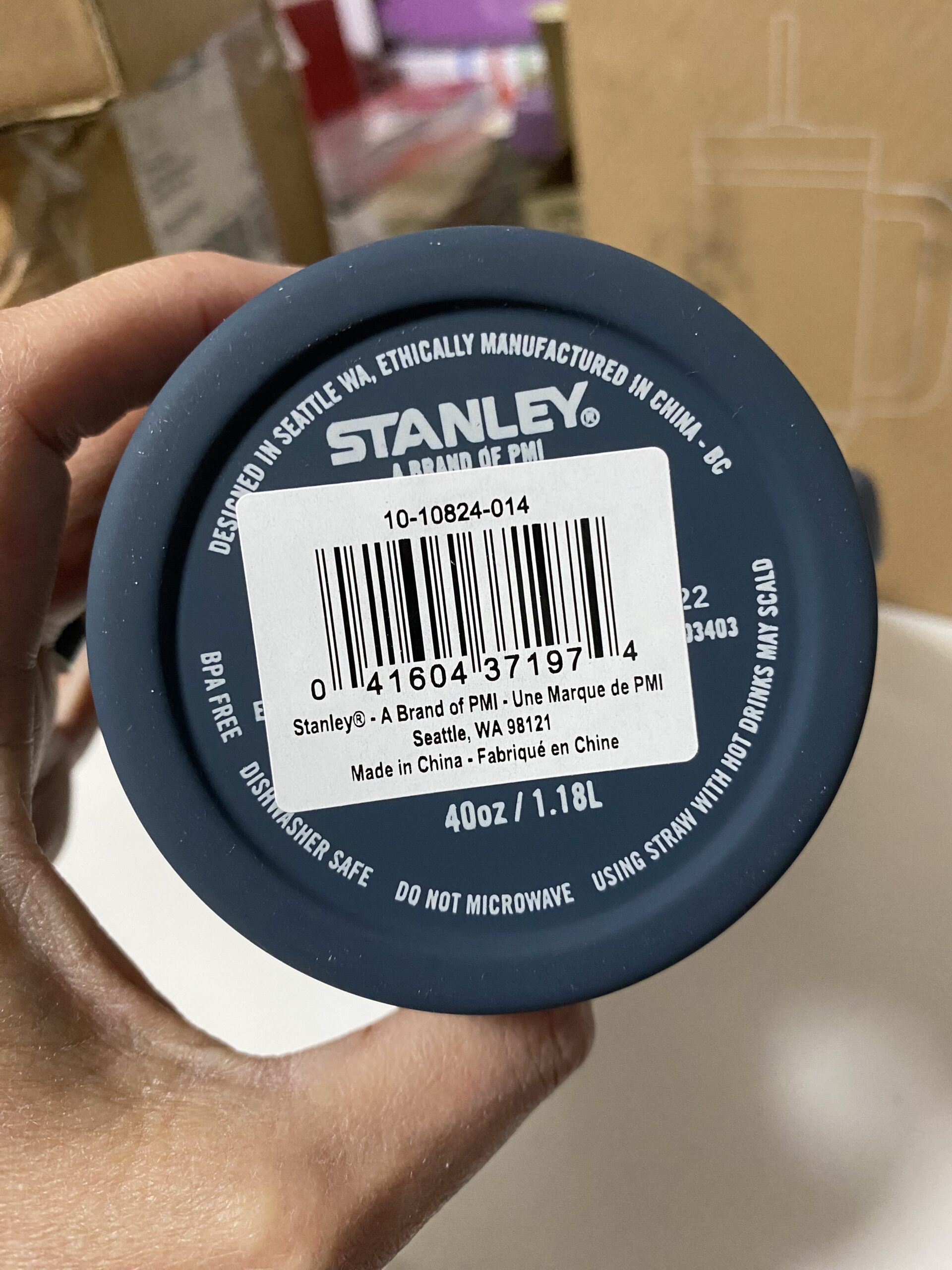
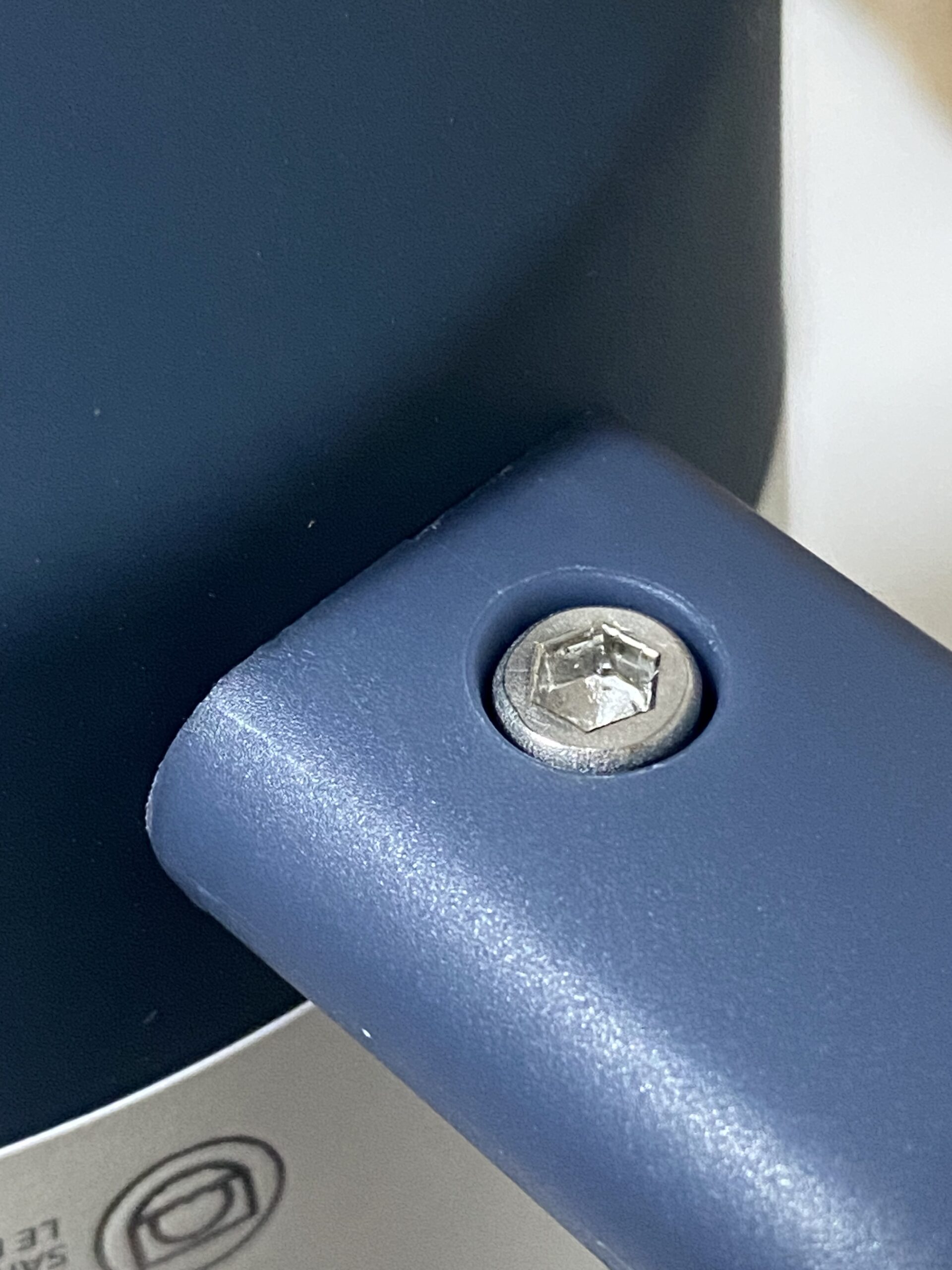
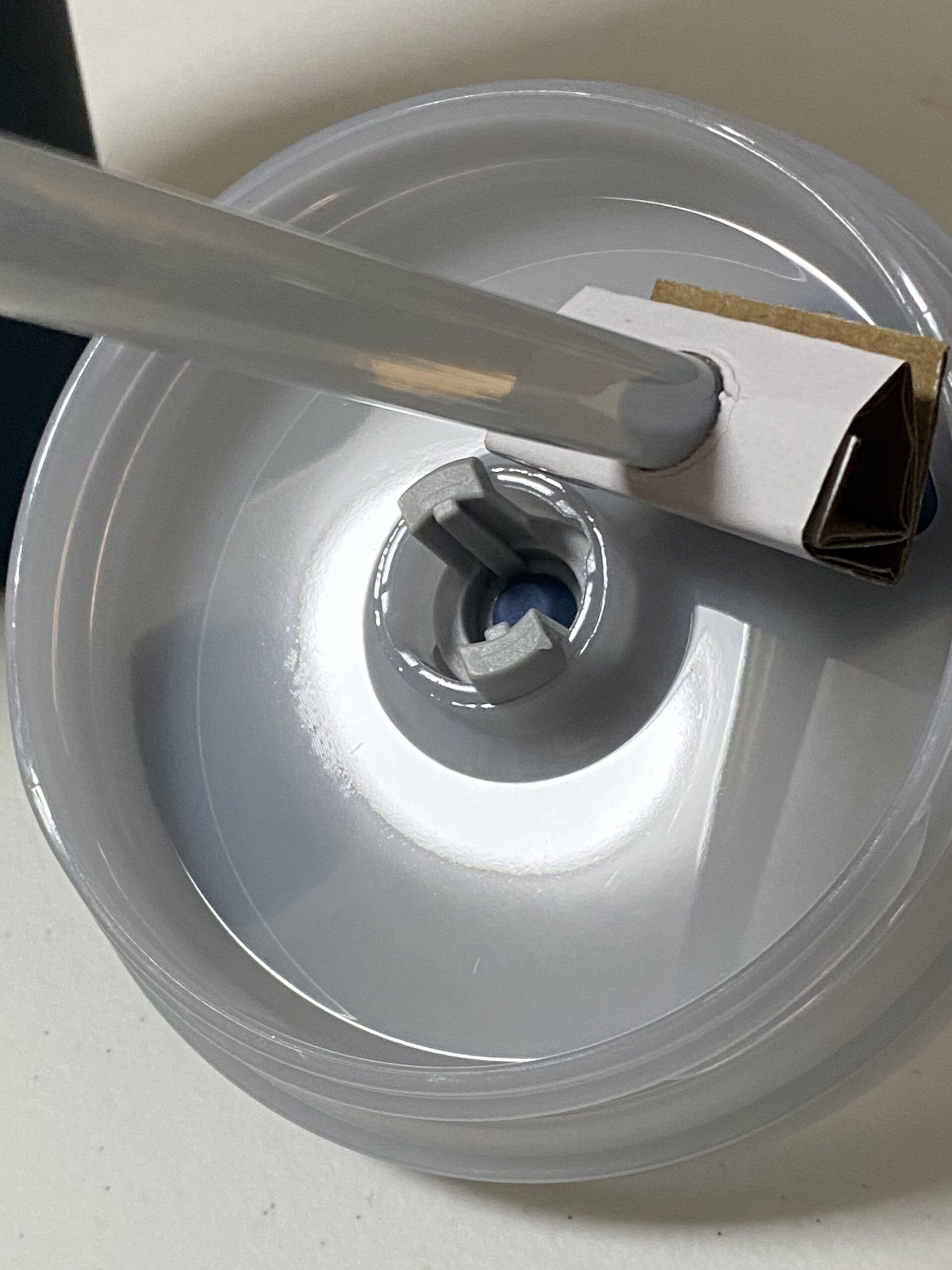
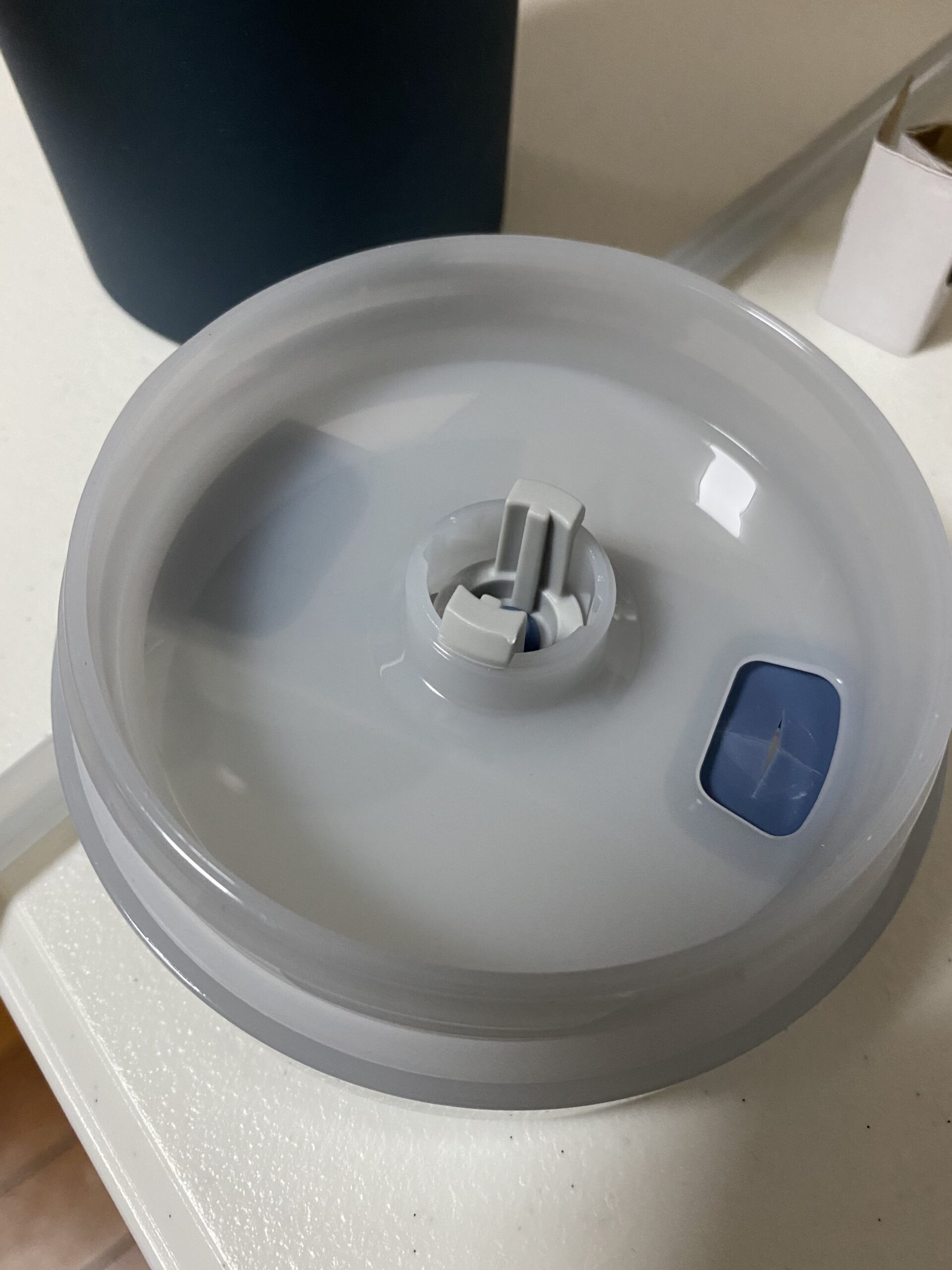
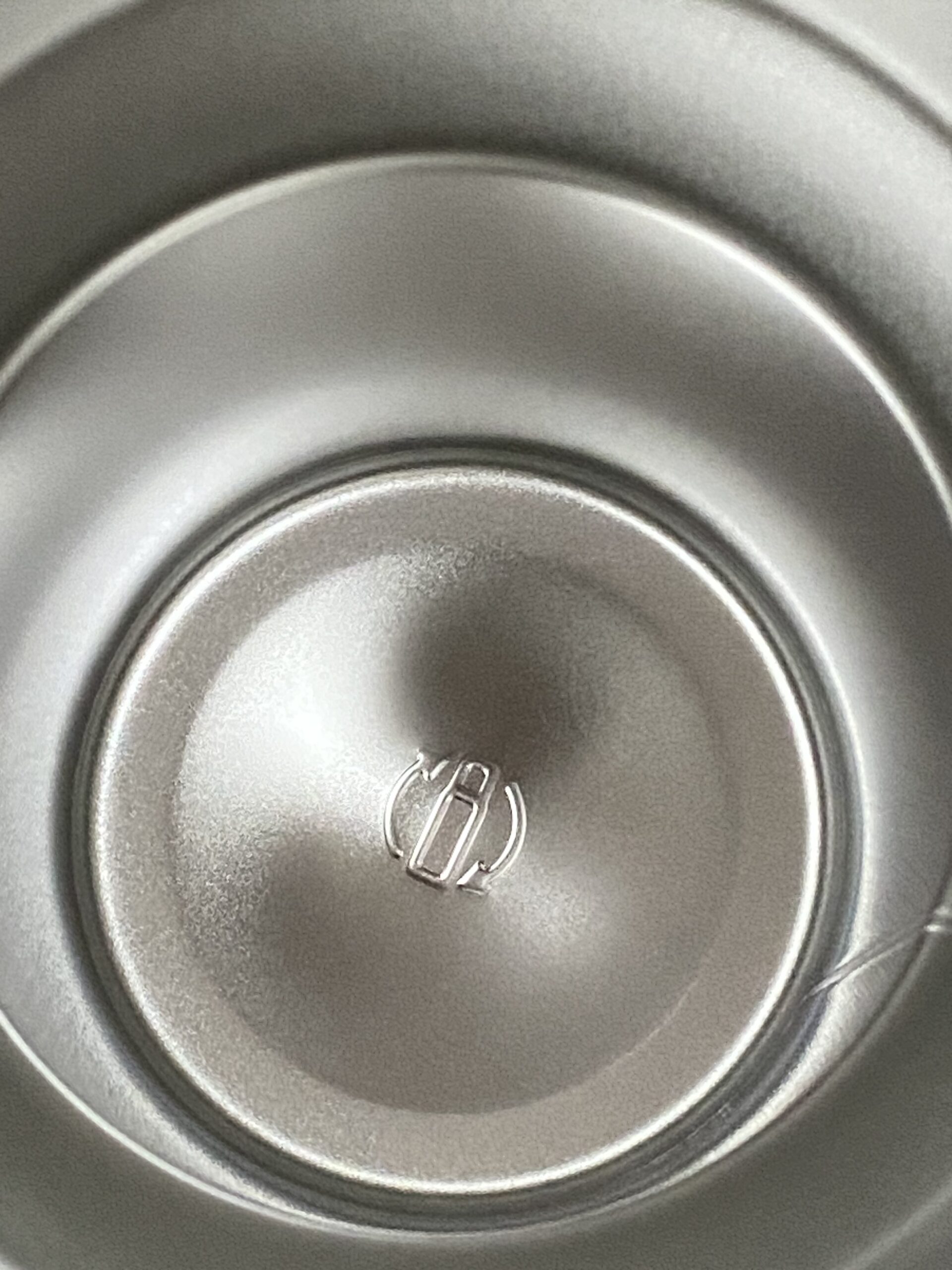
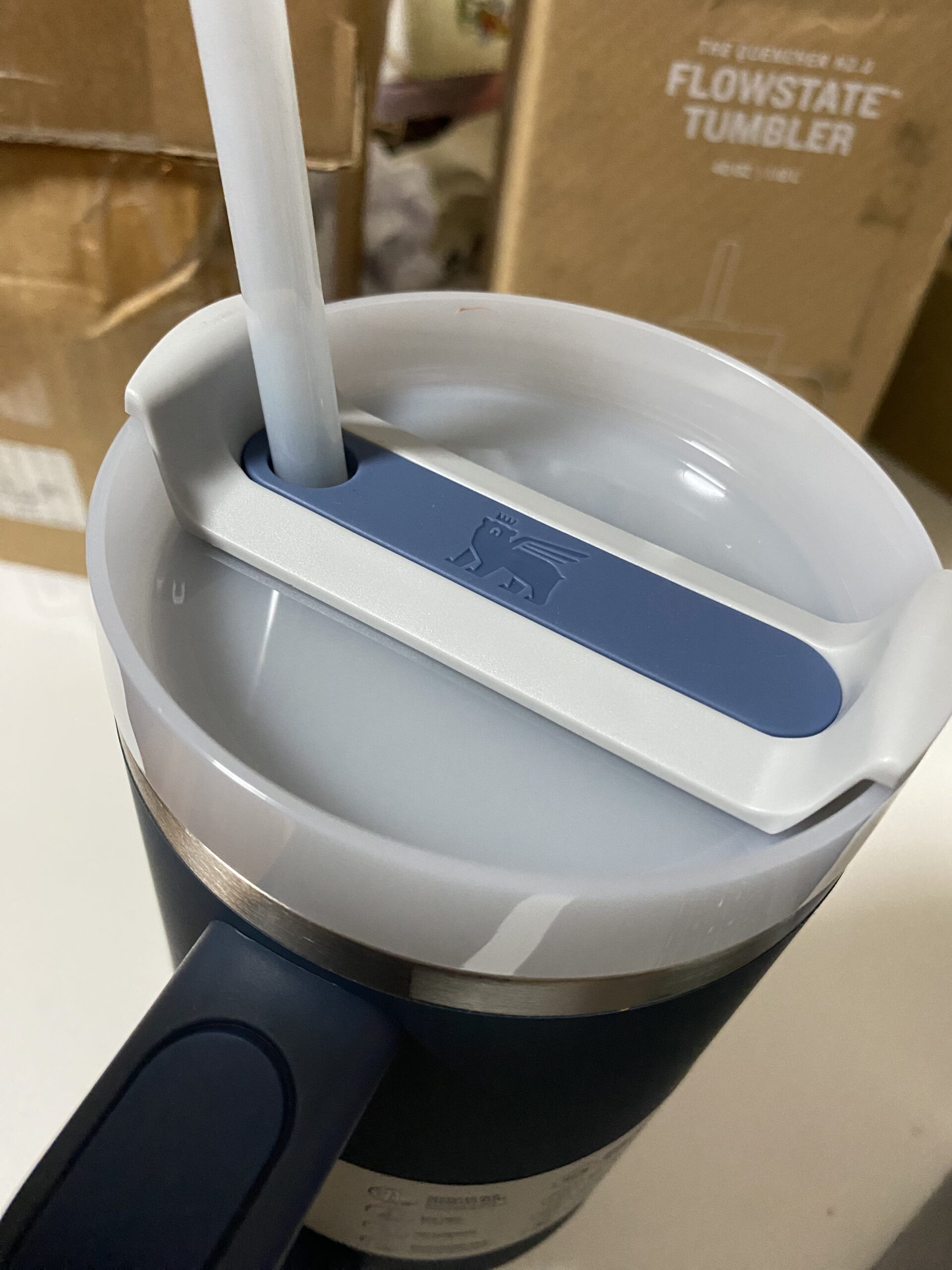
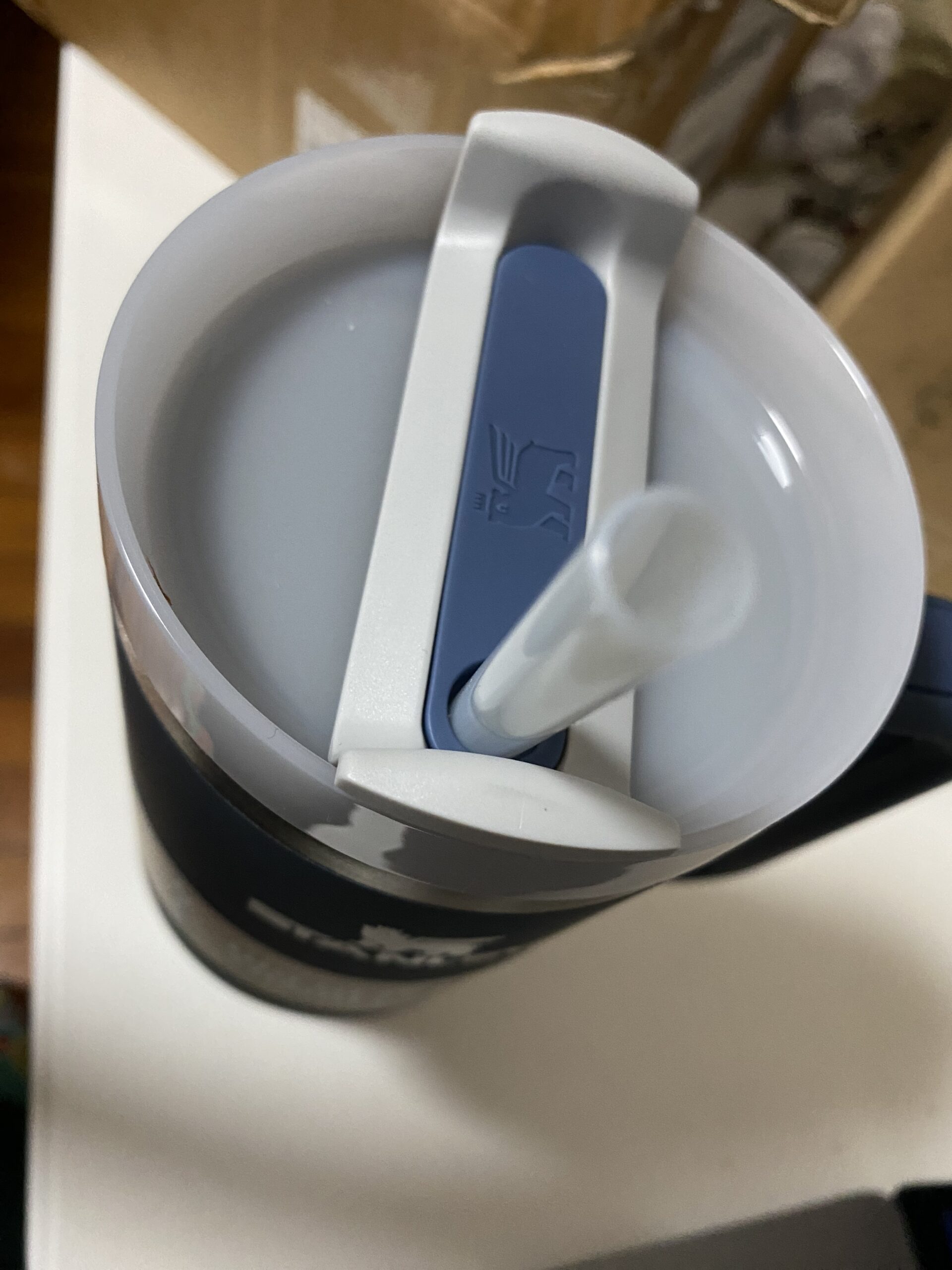
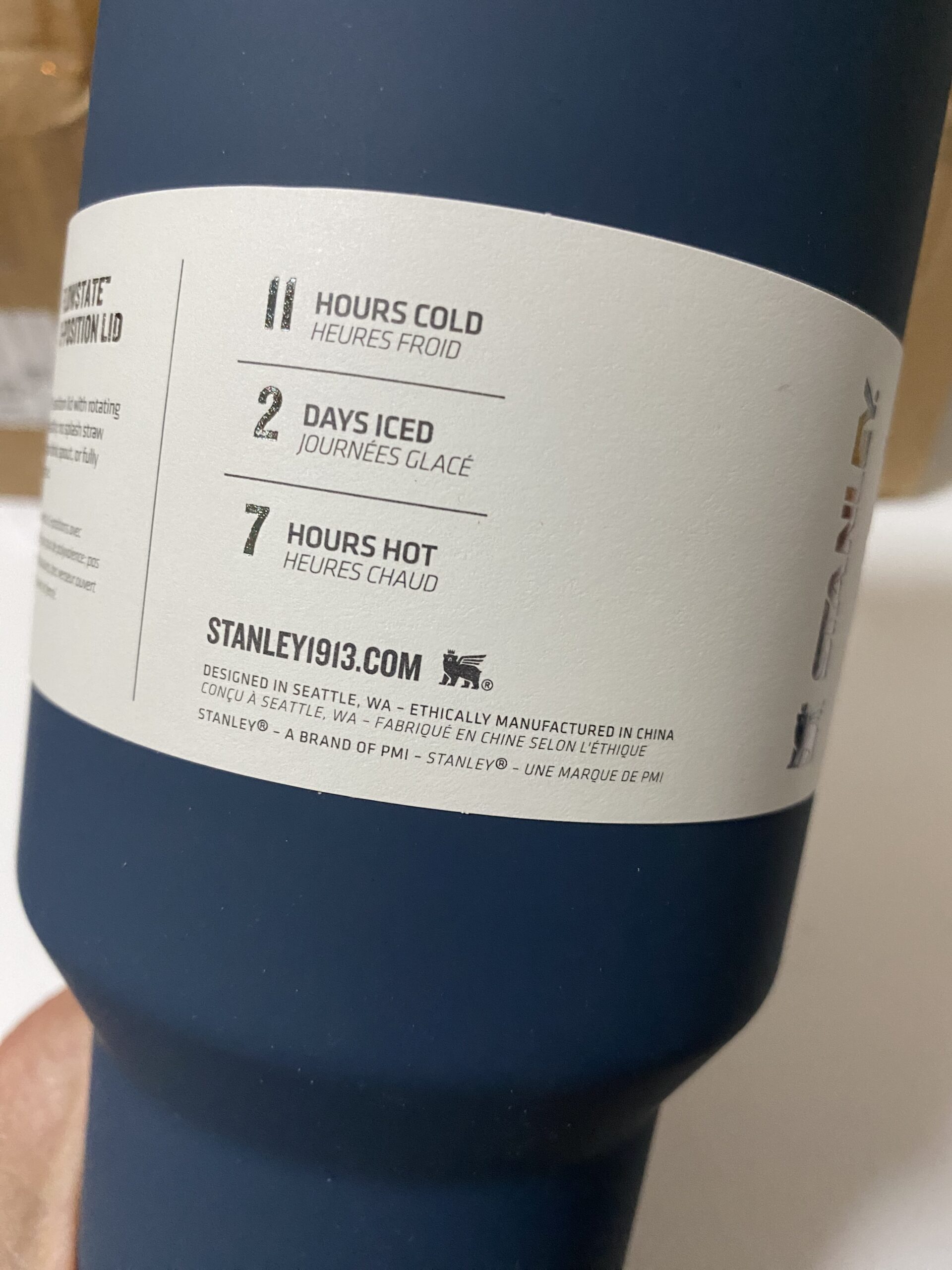
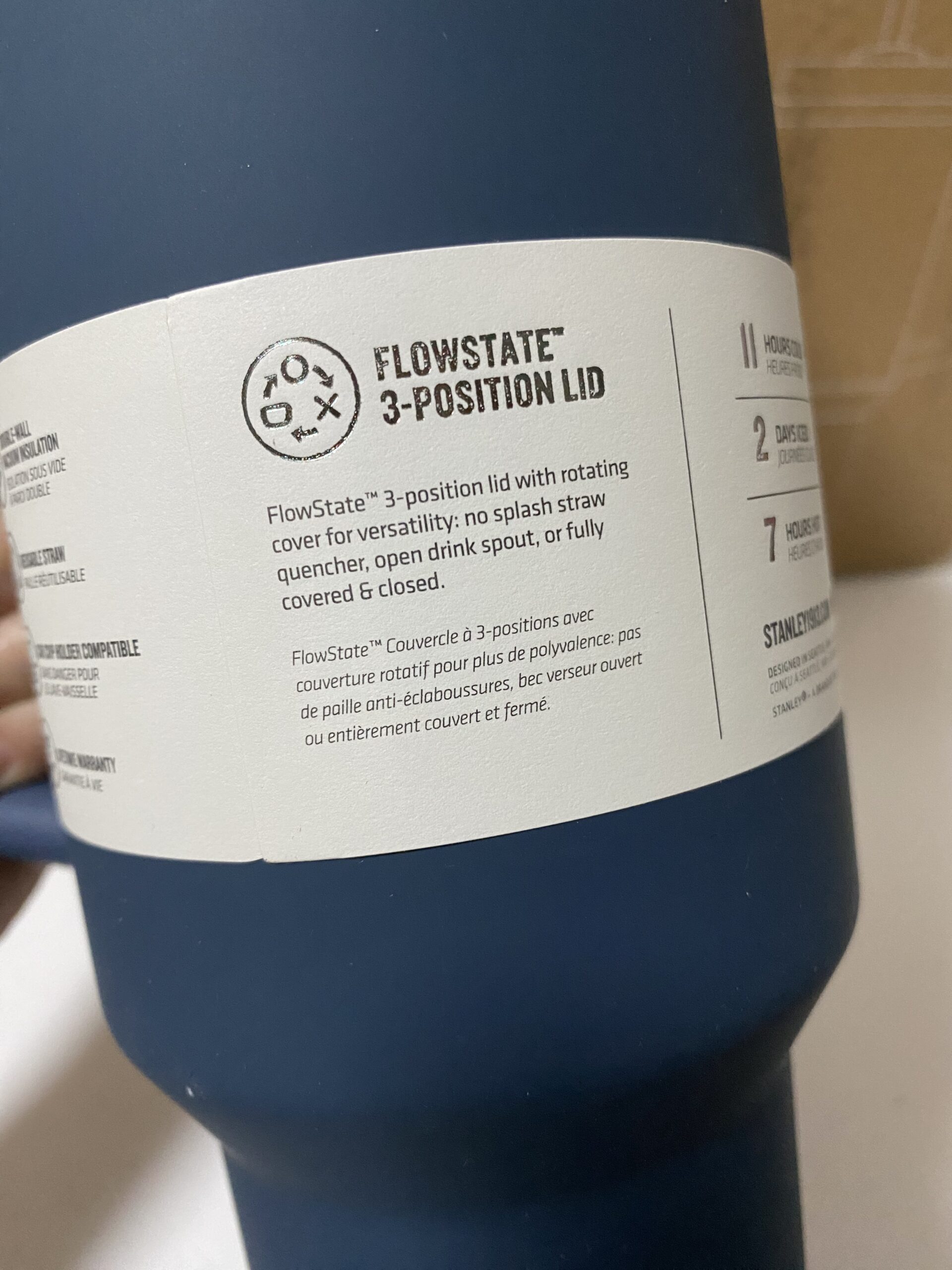
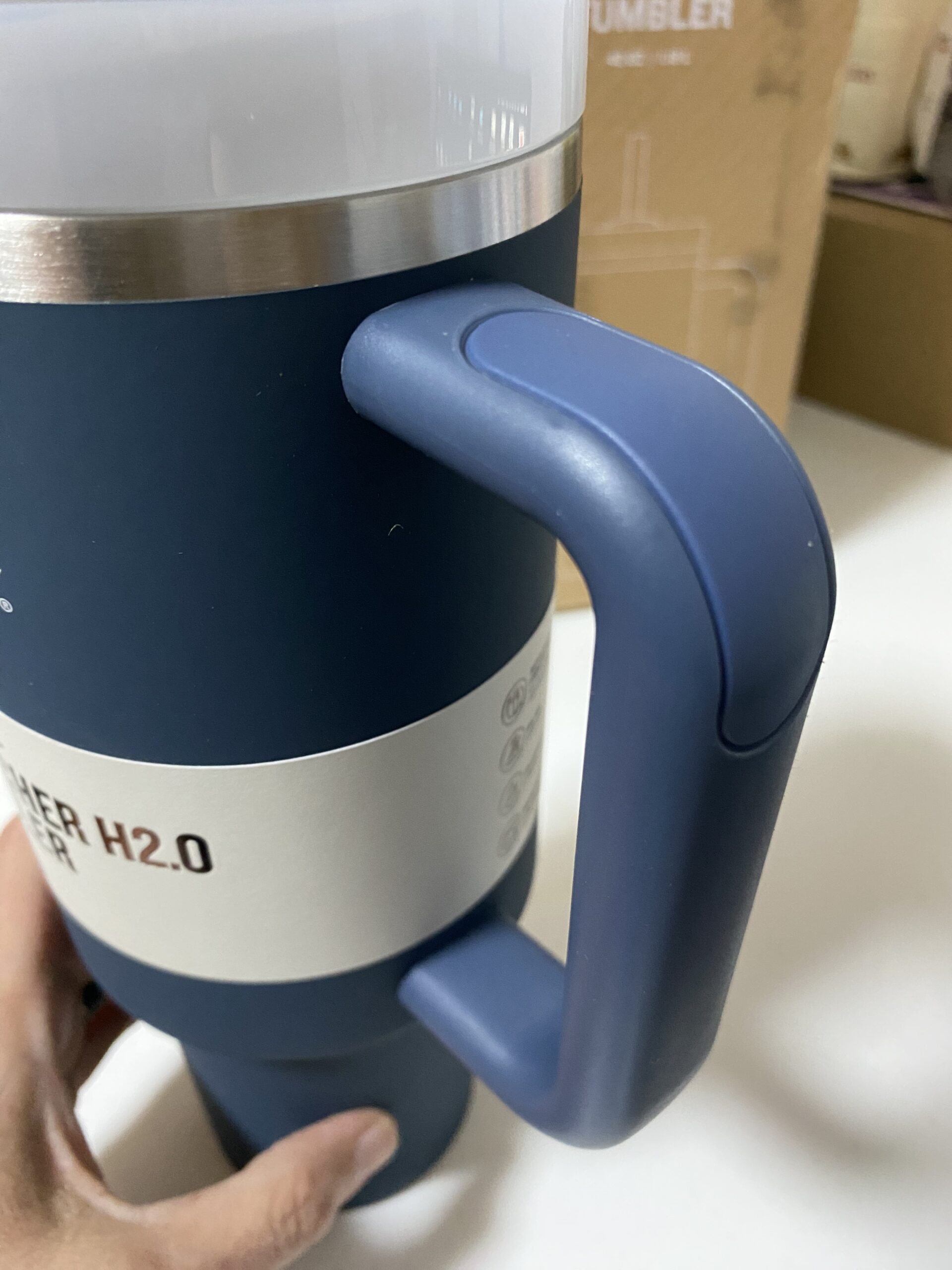
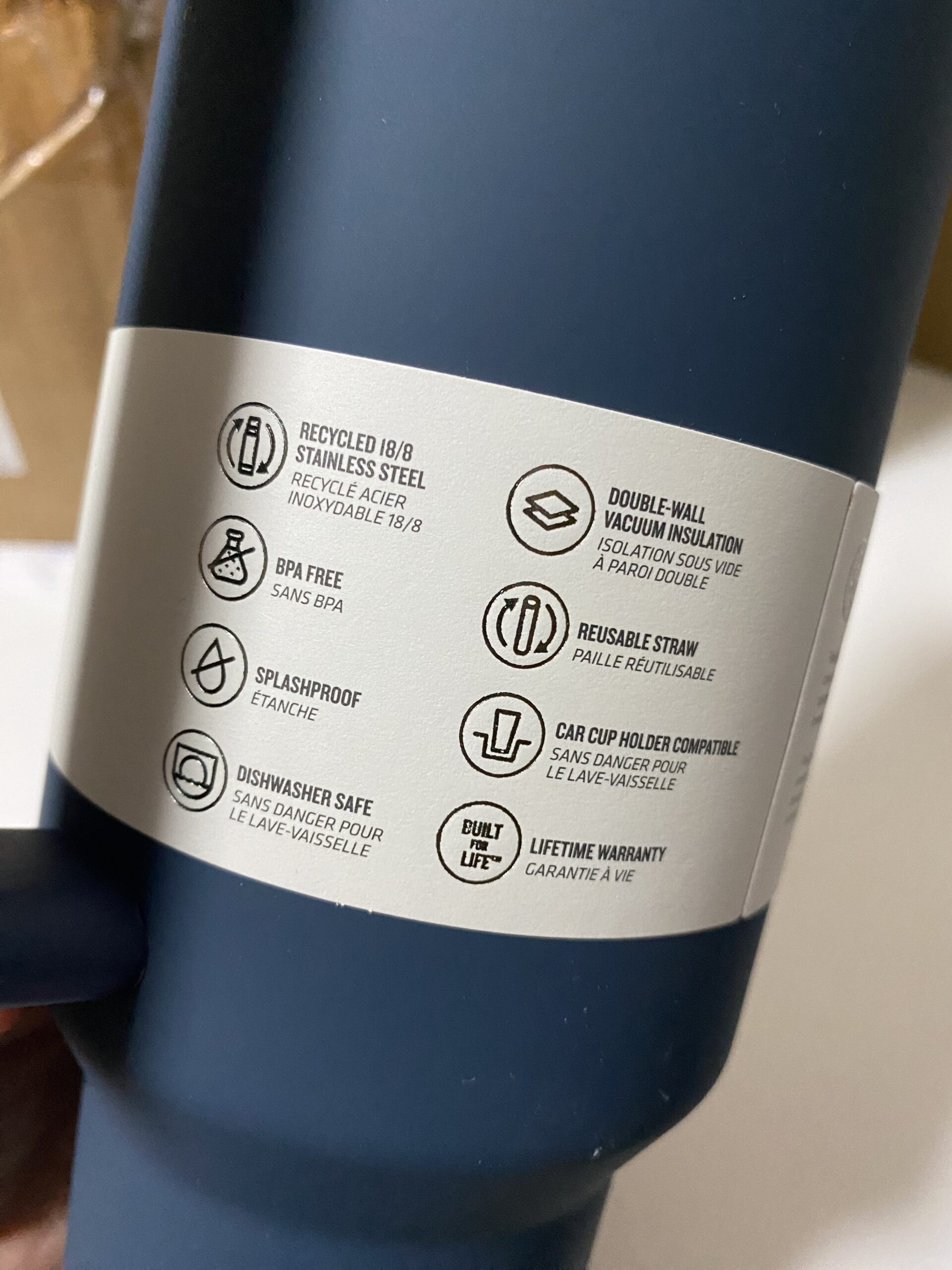
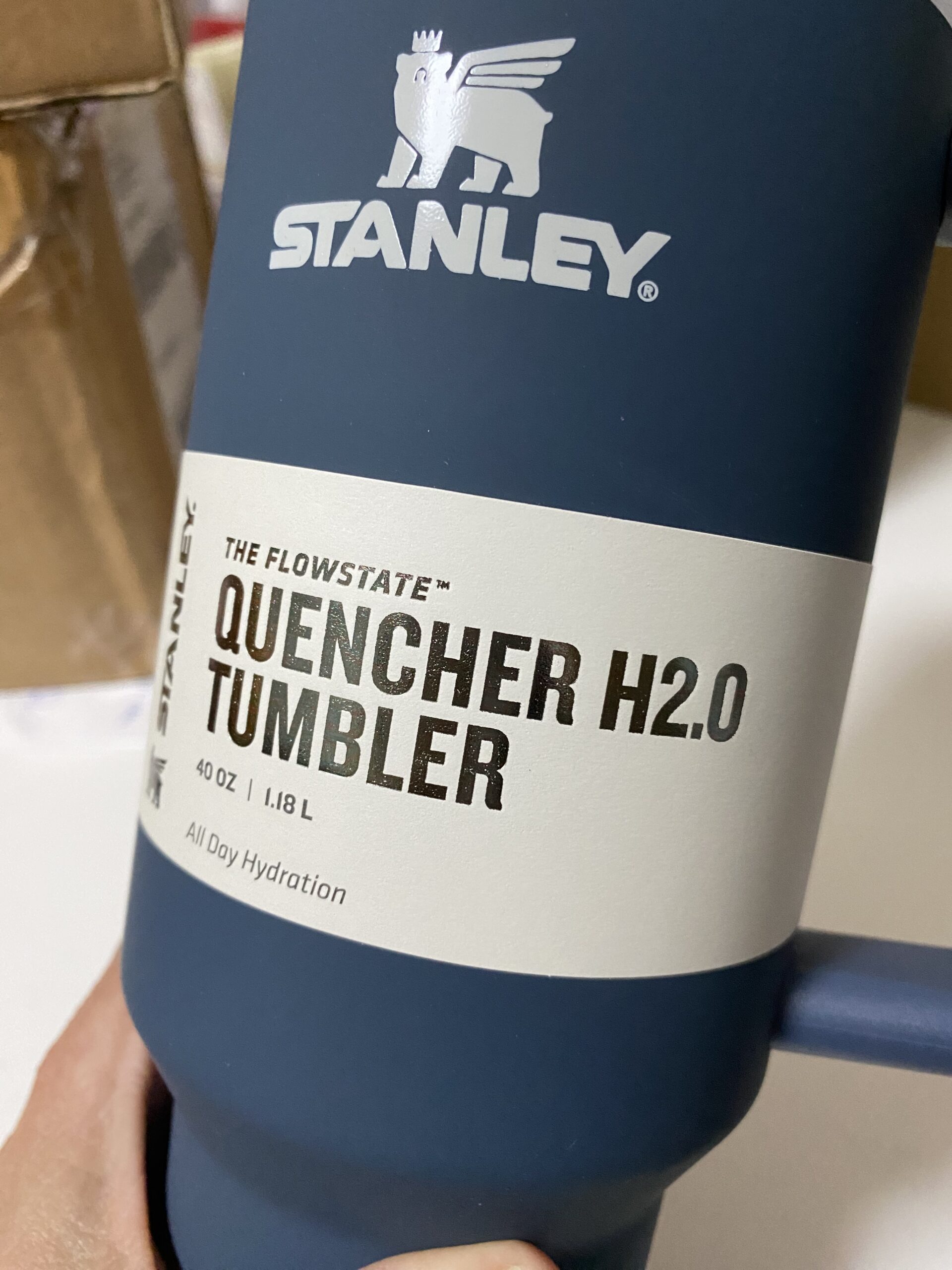
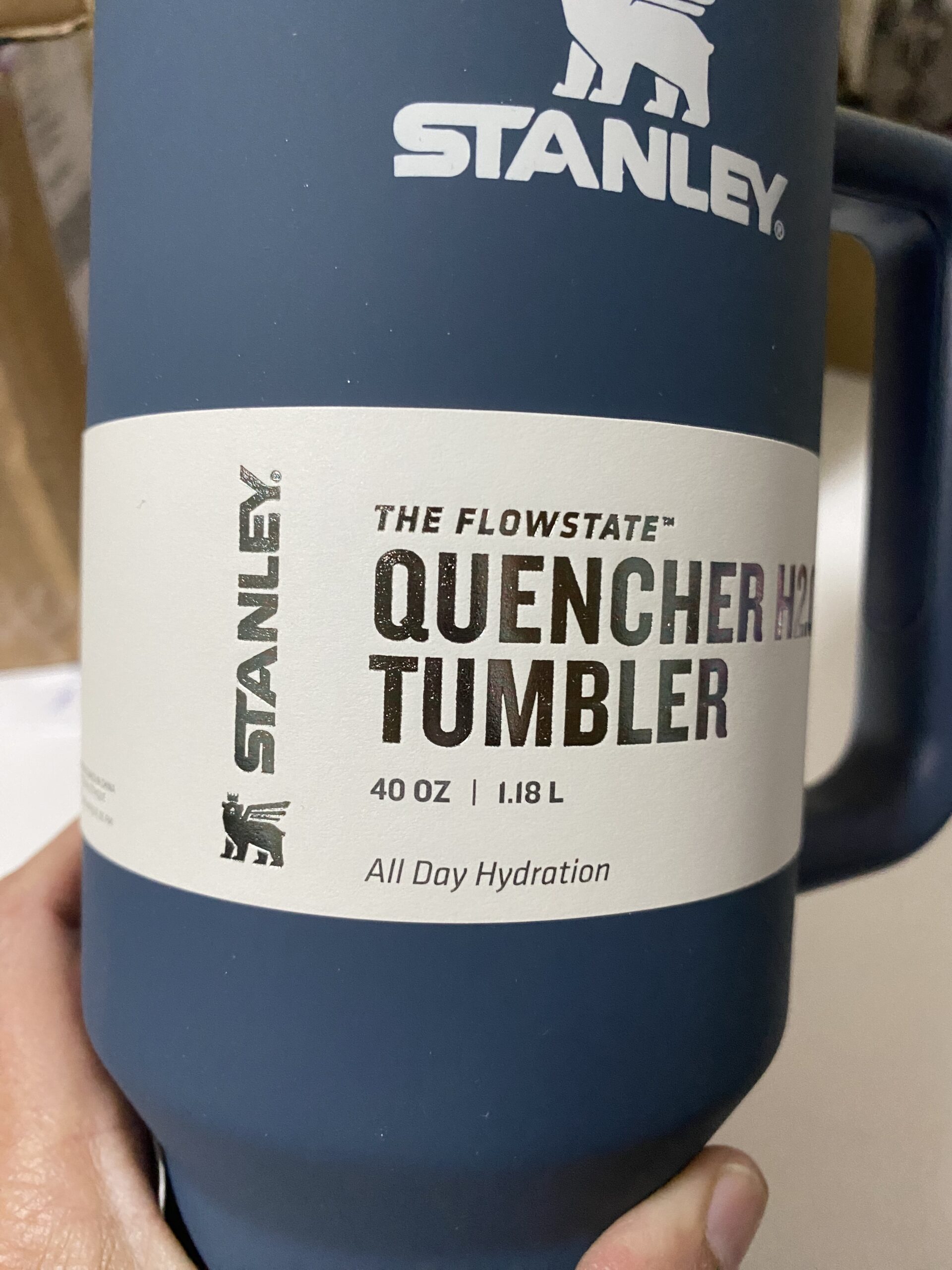
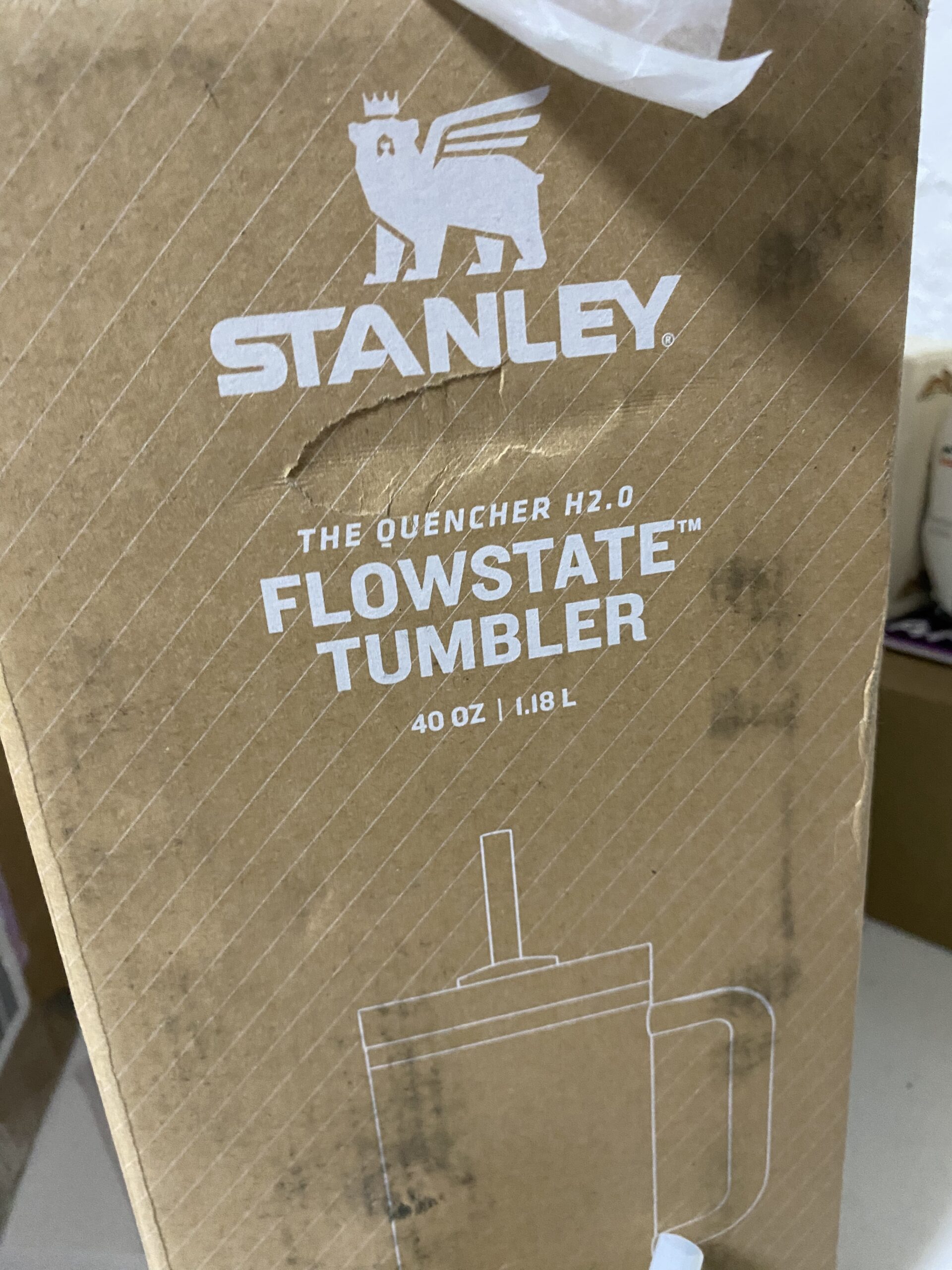
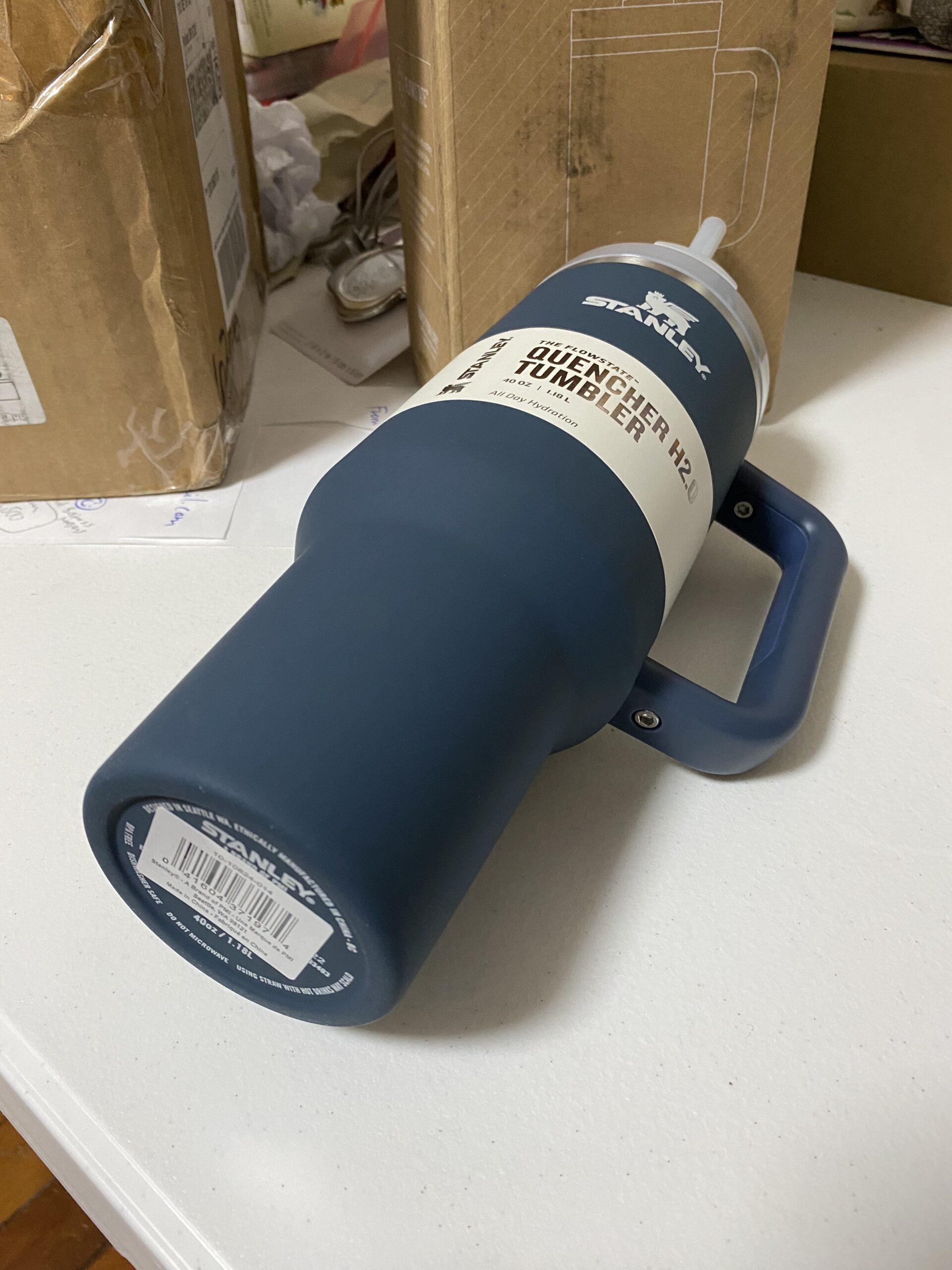
Never Miss an Important Article Again!
Join our Email List









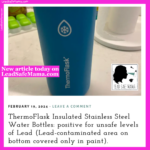
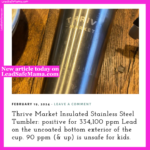
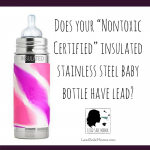
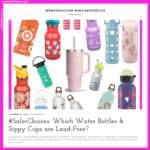
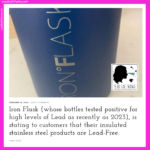
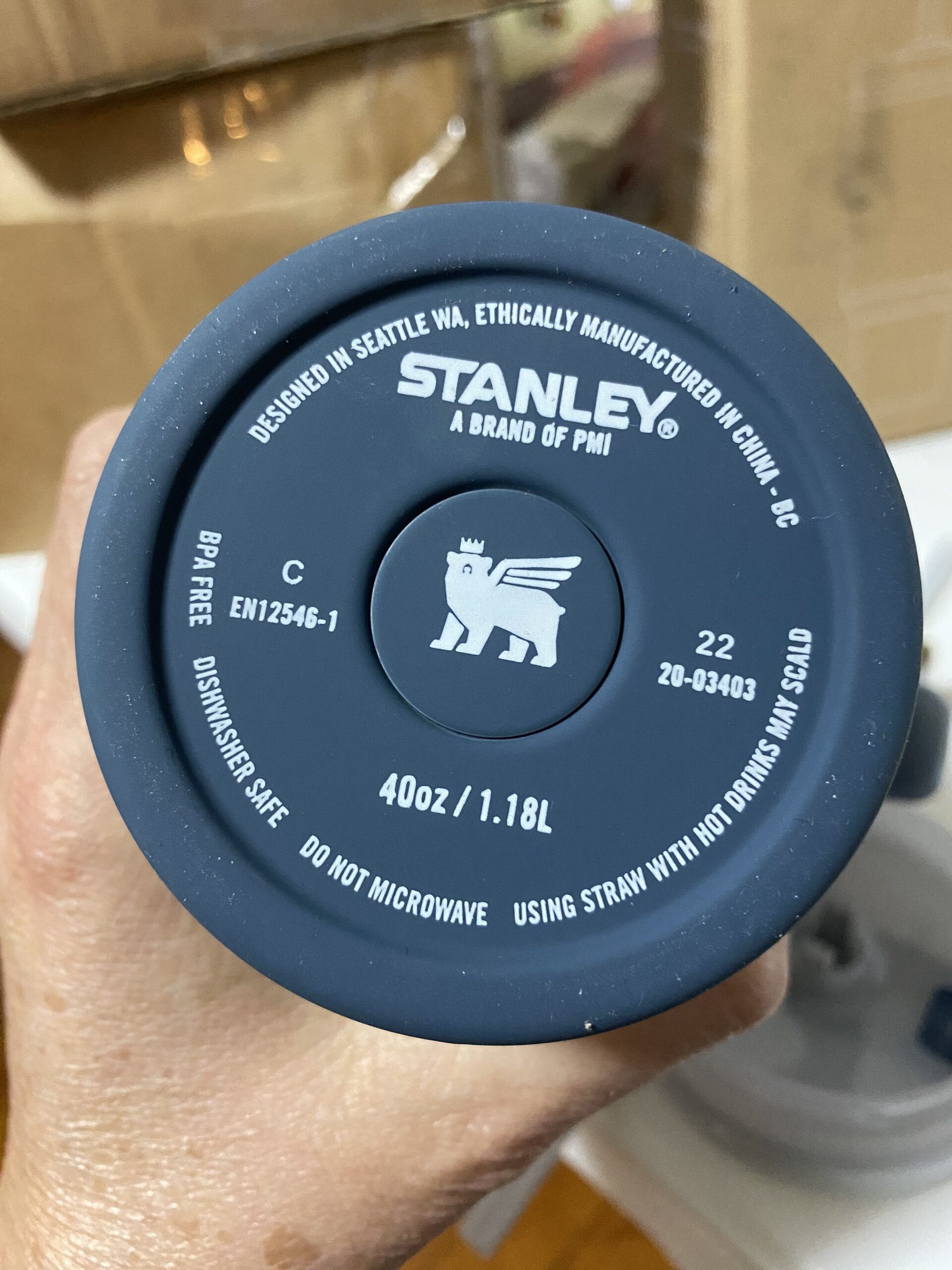
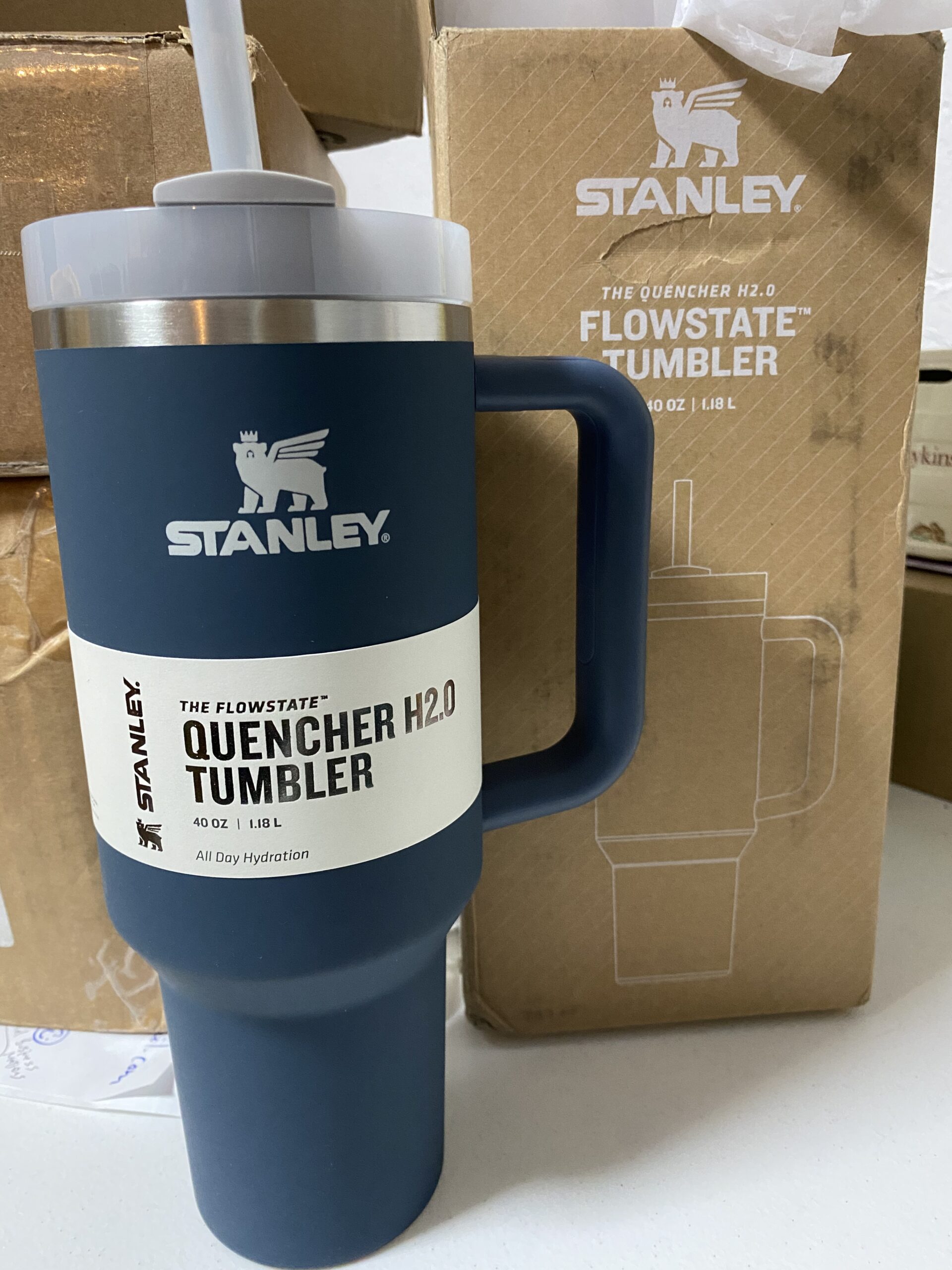
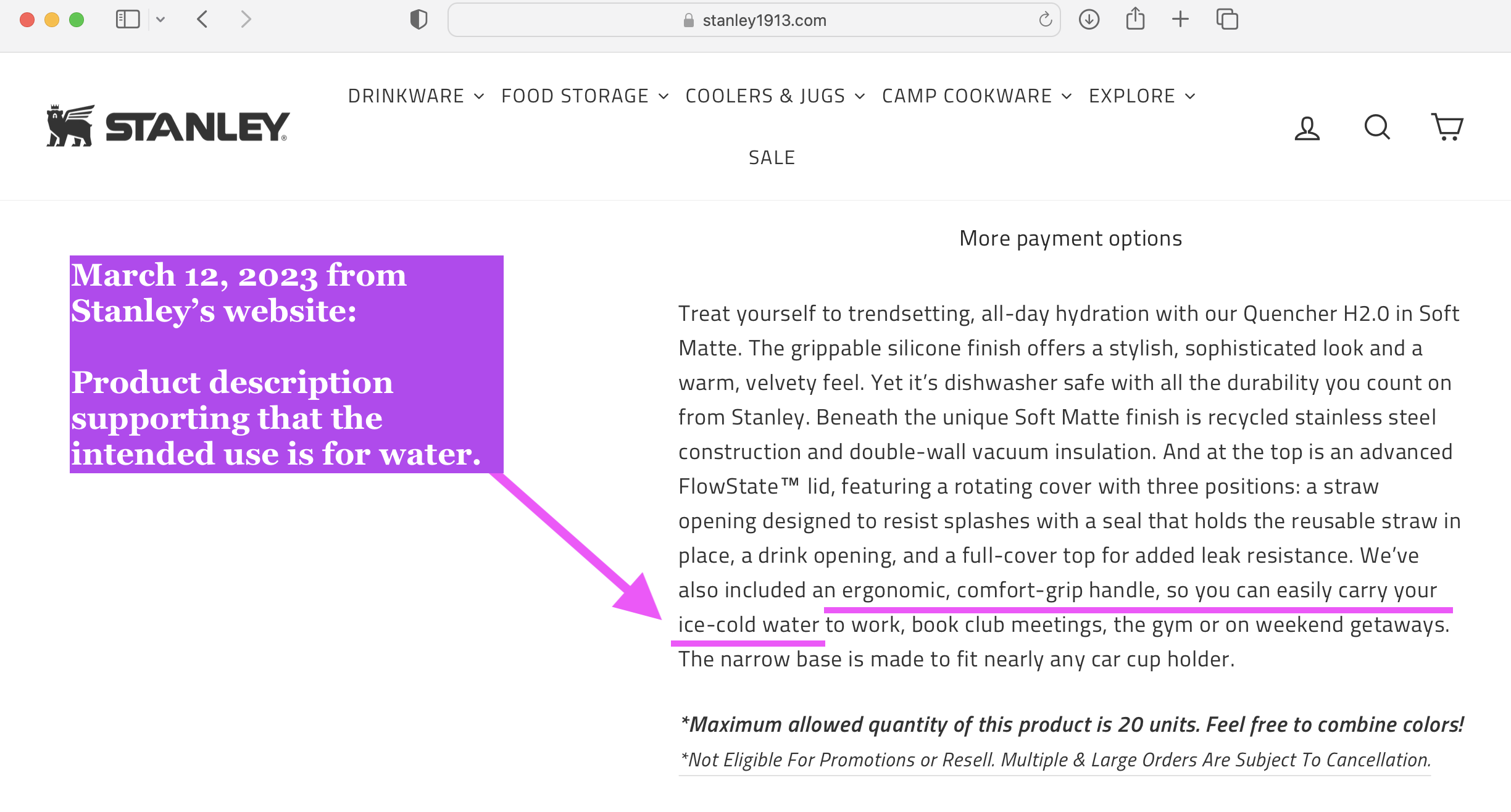
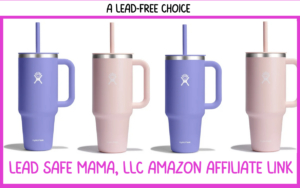
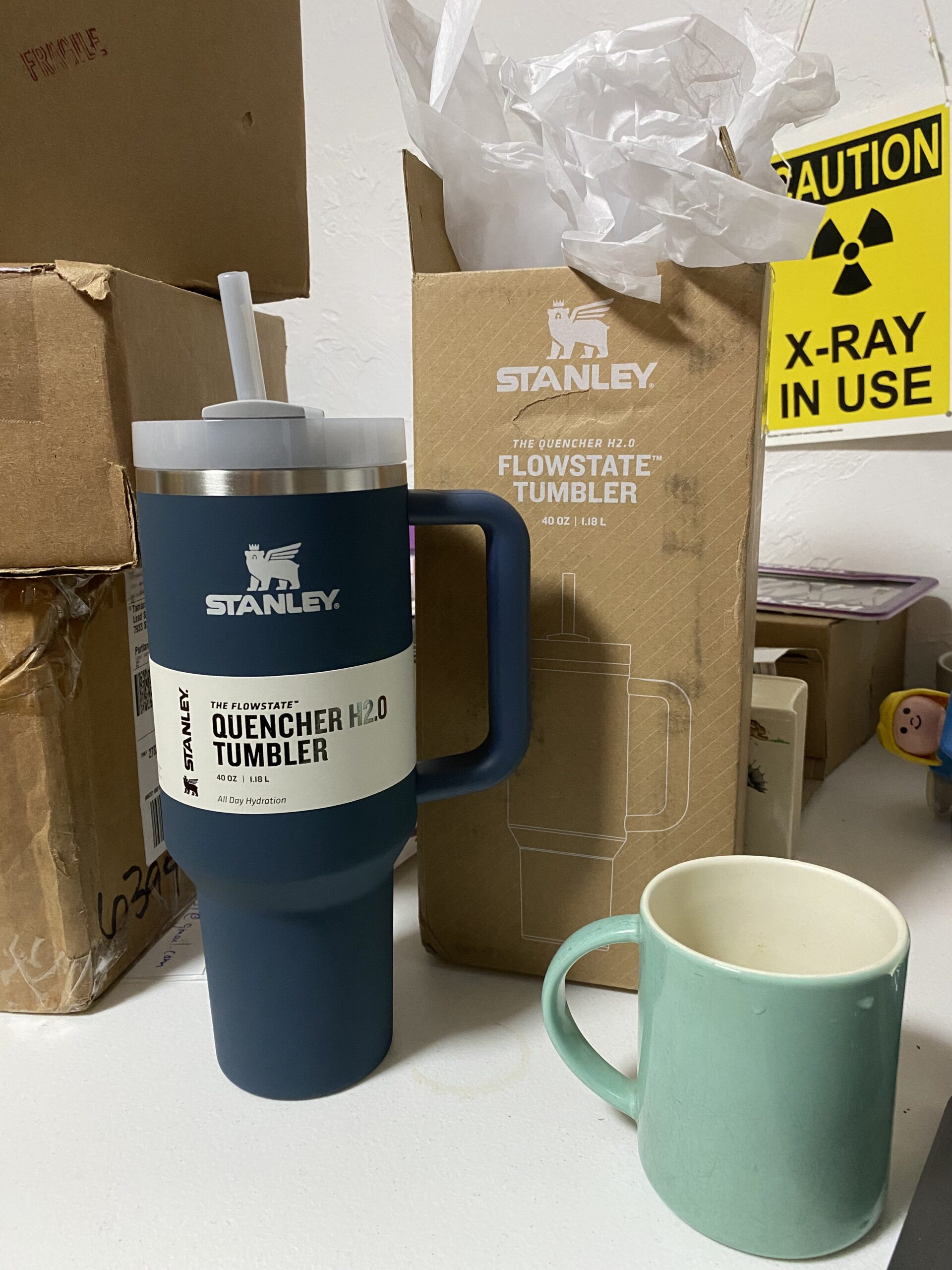

Can you recommend an on the go drinkware coffee or tea option other than stainless?
Your comments about metals made me think back to school days. My sister and I both played the flute. I’m pretty sure it was made of nickel and my sister had a red rash on her chin. This was sixty yrs.ago,but she continued to play flutes for many yrs.in the Army band. Have you tested musical instruments?
Do you think all colors of this model would have the same results for the silicone coating? Thanks.
I did not know that stainless was not good for coffee drinks. I usually drink iced coffee, and I’m always on the go. What would you recommend to use for a traveling coffee container?
Hi there, I did not see on your Instagram page the update and more information regarding the cups being sealed with lead? Could you send me a link or point me in the right direction for the dates posted? Thanks!
Came here to say this same thing.
This article was published in March of 2023. It’s in my Instagram reels from March – just scroll down until you see the Stanley testing: https://www.instagram.com/leadsafemama/reels/
Tamara,
Why does this review of the Stanley cup have Nickle 80,600 in red while the Yeti cup with Nickle 88,500 is in blue? Am I missing something?
One measurement is outside the other is on the inside surface that may leach into the liquid and be ingested. I am guessing that is the difference.
You can see multiple measurements for nickel for each item being tested.
My stanley recently fell off the table and the metal disc on the bottom popped off. I can’t find where to buy 3m Lead test. Any suggestions? Thanks for your work!
It’s definitely leaded. you don’t need to test it (don’t waste your money on a test.) Contact them and ask for a replacement if possible.
You mention Hydrojug in section 6 as also having lead, but then is not mentioned in section 7 as a brand that you’ve tested. Is it an assumption that there is lead in Hydrojug, or has it been proven?
Did you test the silicone straw for the hydroflask? You have mentioned in the past about cadmium etc. in silicone. Thanks
I purchase stainless steel tumbler blanks from the stainless steel depot and use “food safe” resin to seal the designs I create. Just wondering if you have tested them, or if there is a way to test them myself? I know resin isn’t fully food safe, so I don’t create anything that you put food on, just the tumblers. I don’t want to continue using a toxic tumbler and sell, especially since I’m doing all I can to remove toxins from my own home. TIA!
So the bottom popped off my daughter’s Stanley months ago. I didn’t think much of it. And she’s been using it and I’ve been washing it in the dishwasher with all our other dishes. Obviously I need to throw the cup away, but is there anything else that needs to be done? Is there now trace lead on everything we’ve been washing with it? Including the dishwasher?
Wash everything again once – but run the dishwasher empty with detergent first.
Thank you! It’s seemed so daunting since we’ve been washing it with everything weekly for the last 3 months, so we’ve obviously been eating off the dishes and utensils for a while now. Thank you for your advice. I would have still be using the cup thinking it was only cosmetic damage.
Tamara, do you have any information on the popular bottle brand ”Ice Shaker”? I’m concerned about possible lead but i am unable to find out more information and the company won’t reply to my emails.
I use a tall Stainless Steel Coffee “Cup” from Starbucks with a black plastic top with a sliding seal piece. It was obviously sold for use with coffee. I received it as a Christmas Gift about 15 or 20 years ago. Do you have any advice about such containers? I use it with hot or cold coffee, and less frequently with hot or cold tea. Do you have advice about this?
Thank you for conducting such thorough testing and sharing your findings with the rest of us! I have a Stanley tumbler and did notice the exposed bottom months ago. I thought it was strange, but never knew exactly why. I’ve been using it for months to hydrate while breastfeeding my daughter at night- I’m so glad to know so I can stop using it immediately. Thank you again.
Simple Modern says that their products are free of lead, cadmium, and regulated phthalates. They also say that their stainless-steel vessels use lead-free and BPA-free paint, ink, and powder coatings. Simple Modern tests their products through independent, accredited testing labs to ensure compliance with all U.S. regulatory requirements. Just curious if they’ve ever been tested or if there are plans to test, since these are a big seller too? Is ALL stainless really unsafe for hot beverages? Some are marketed to use for hot beverages.
I would like to know this too!!
Hi Tamara, I notice your testing of all of the other surfaces (other than where the lead seal is) showed non detect for lead on this cup. Yet when I saw a video of [redacted] testing the drinkable surfaces with [an] XRF gun, it was around 300 ppm lead. This freaked me out because I don’t think I’ve ever seen you have a plain stainless steel product like that register lead (as a component. The only explanation I could come up with is lead (from the sealing plug) must have gotten sprayed around [redacted], but I’m wondering what you think of this. Could you have different (more/less sensitive) XRF guns than each other? Not sure what to make of it.
Hi. The person you are referring to is (to my knowledge) not trained and certified in using the instrument and is also (clearly demonstrated to be) working in an environment that likely has quite a bit of cross contamination. Not at all “apples to apples”. I have been fielding a lot of questions like this. I have been doing this testing since 2009 and am very confident in my test results, work environment and testing methodologies used.
T
Okay, I’m very glad to hear this. I’m thinking if lead were included (as a component) in stainless then it would be shown up in your readings of pots and pans by now. I’ll say it again: I’m very glad to hear this.
Thank you for taking the time to reply. I don’t have a Stanley cup and don’t intend to buy one, but I lean very heavily on stainless (annd cast iron and glass) and I cook a lot!
The bottom of my Stanley cup logo fell off and now there is a circular smooth steel like material exposed. I have no idea how long this has been like this. My question is does the steel casing of the pellet underneath need to be drilled into to attain the lead? or does the lead sit on the smooth shiny surface of the pellet itself? In other words does the pellet expose you to lead or the internals of the pellet? In the video it looks like you drilled into yours. Thank you!
I recently noticed one of our Stanleys is missing the cover on the bottom. Until recently, I did not know about the lead issue. I put all of our Stanley’s in the dishwasher almost every day. Is there concern about the lead contaminating other items during the dishwasher cycle?